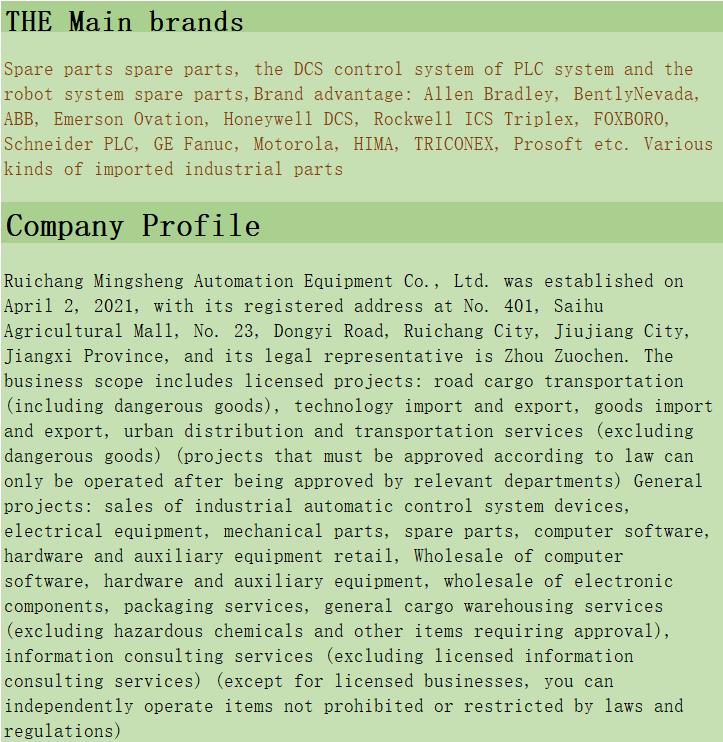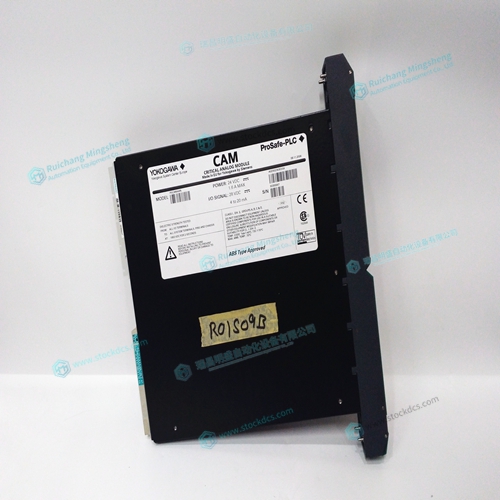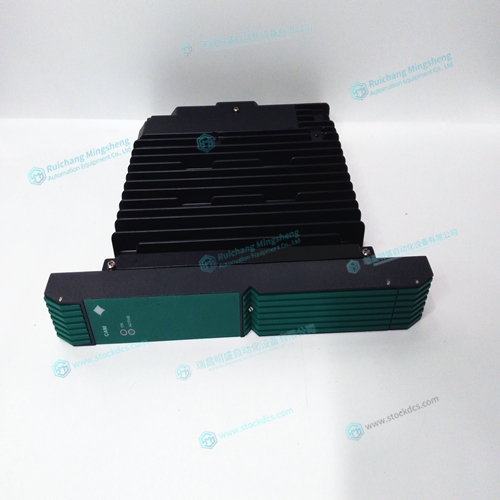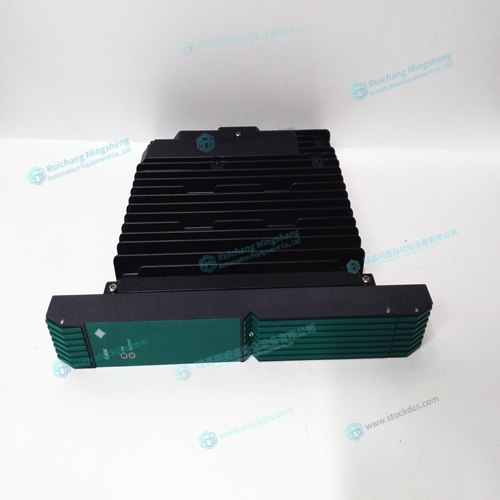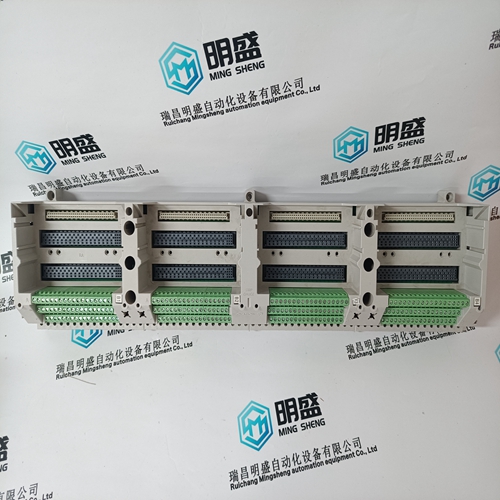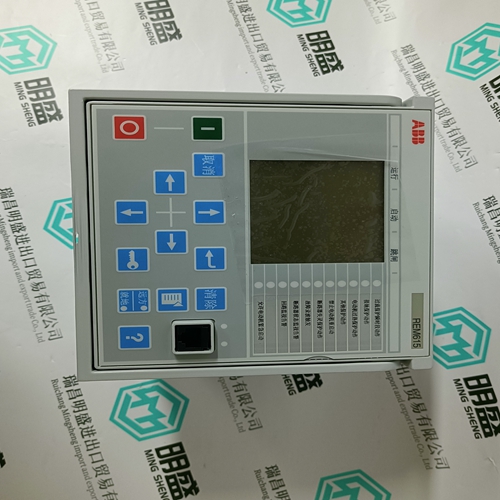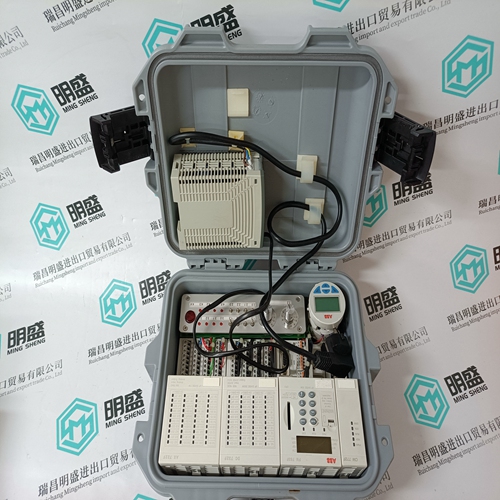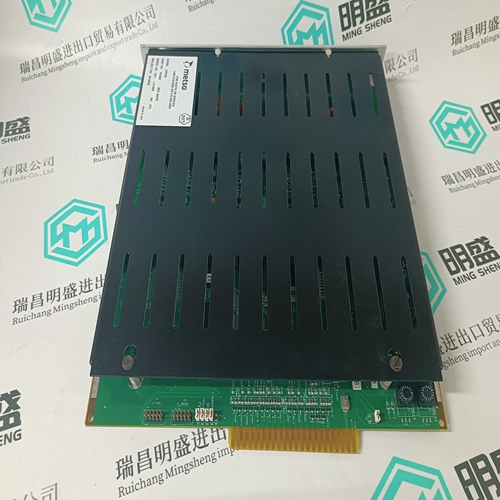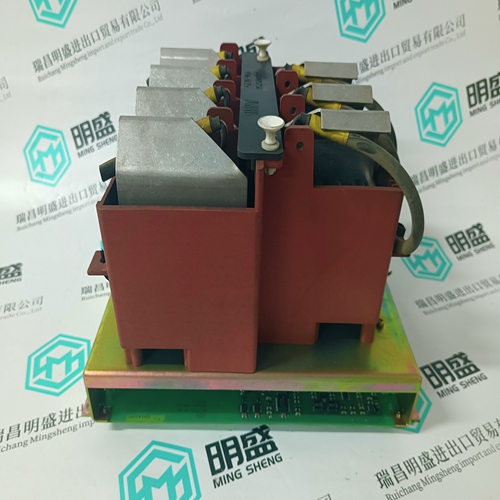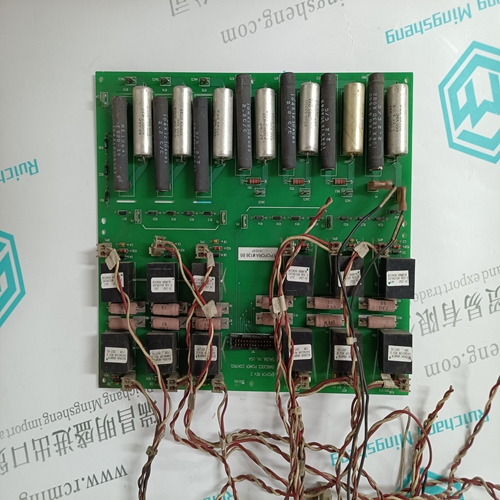Home > Product > DCS control system > PSCAMAAN A5E0023936304 gateway module
PSCAMAAN A5E0023936304 gateway module
- Product ID: PSCAMAAN A5E0023936304
- Brand: YOKOGAWA
- Place of origin: JAPAN
- Goods status: new/used
- Delivery date: stock
- The quality assurance period: 365 days
- Phone/WhatsApp/WeChat:+86 15270269218
- Email:stodcdcs@gmail.com
- Tags:PSCAMAAN A5E0023936304gateway module
- Get the latest price:Click to consult
PSCAMAAN A5E0023936304 gateway module
The DMC-21x2/21x3 provides TTL inputs for forward limit, reverse limit, home, and abort signals.
The controller also has 8 TTL inputs (for general use) as well as 8 TTL outputs.
Controllers with 5 or more axes have an additional 8 TTL inputs and an additional 8 TTL outputs.
This chapter describes the inputs and outputs and their proper connection.
If you plan to use the auxiliary encoder feature of the DMC-21x3, you will require a separate encoder
cable and breakout - contact Galil Motion control
Limit Switch Input
The forward limit switch (FLSx) inhibits motion in the forward direction immediately upon activation of the switch. The reverse limit switch (RLSx) inhibits motion in the reverse direction immediately upon activation of the switch. If a limit switch is activated during motion, the controller will make a decelerated stop using the deceleration rate previously set with the DC command. The motor will remain on (in a servo state) after the limit switch has been activated and will hold motor position. To set the activation state of the limit switches refer to the command CN, configure, in the Command Reference. When a forward or reverse limit switch is activated, the current application program that is running will be interrupted and the controller will automatically jump to the #LIMSWI subroutine if one exists. This is a subroutine which the user can include in any motion control program and is useful for executing specific instructions upon activation of a limit switch.
After a limit switch has been activated
further motion in the direction of the limit switch will not be possible until the logic state of the switch returns back to an inactive state. This usually involves physically opening the tripped switch. Any attempt at further motion before the logic state has been reset will result in the following error: “022 - Begin not possible due to limit switch” error. The operands, _LFx and _LRx, return the state of the forward and reverse limit switches, respectively (x represents the axis, X,Y,Z, or W). The value of the operand is either a ‘0’ or ‘1’ corresponding to the logic state of the limit switch, active or inactive, respectively. If the limit switches are configured for active low, no connection or a 5V input will be read as a ‘0’, while grounding the switch will return a ‘1’. If the limit switches are configured for active high, the reading will be inverted and no connection or a 5V input will be read as a ‘1’, while grounding the switch will return a ‘0’.
